Summer’s Almost Here!
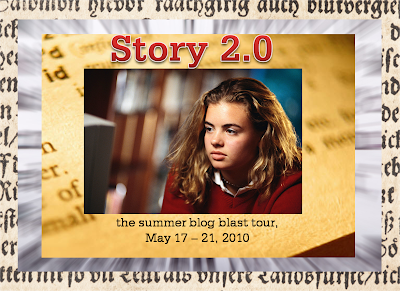 It’s time for that beloved tradition (well, for the last few years, anyway) called the Summer Blog Blast Tour, where Aquafortis and I, along with a lot of the gang in the kidlitosphere, get together to celebrate story and the authors and illustrators who make good children’s literature possible. Our sort of “theme” this week is STORY, 2.0 — because each of our interviewees this week comes at story from a new and different angle.
It’s time for that beloved tradition (well, for the last few years, anyway) called the Summer Blog Blast Tour, where Aquafortis and I, along with a lot of the gang in the kidlitosphere, get together to celebrate story and the authors and illustrators who make good children’s literature possible. Our sort of “theme” this week is STORY, 2.0 — because each of our interviewees this week comes at story from a new and different angle.
Our first guest this week is William, spokesman and producer of The Hazardous Players and self-described dead ringer for the Mythbusters’ Adam Savage. The Hazardous Players is made up of William, Lewis and Justin (and for the sake of today’s chat, Lewis and Justin are the silent partners. You’ll also note that they’ve all left off their last names!), and together, the three of them as artists, storytellers, and actors, create what they call Knighttime.
WHAT IS KNIGHTTIME?
a.) “…a nontraditional approach to literature…”
b.) “…a fantasy adventure where we plan on constructing multiply narratives using various media…”
c.) An original, episodic fantasy which is really an old-time radio show/graphic novel mashup
d.) All of the above
It’s really hard to choose anything but d. What other story site has an audio component, graphic illustration, a sort of goes-with-the-story illustrated guide to the strange flora and fauna of the region, and the occasional professorial dispatch, complete with very amusing sound effects? A safe, fun world for a kid to get immersed in, a labor of love from a Dad to his son, Knighttime will be a real find for families this summer who are looking for interactive stories to share.
Finding Wonderland: Welcome to our blog! On your site, you mention that you repeatedly met your fellow players at various comic book conventions and the like, before you talked them into creating Knighttime. Your site mentions your children – who else was the initial audience for a work like this? How has your kids’ feedback shaped the story? What was the spark that brought the stories to life online? How does team storytelling work for you? What does a typical Players planning session look like? What is the division of labor in reference to artwork and story?
Hazardous Players: My son, Sam, was the initial audience. For years Sam had to endure my dramatic interpretations of Harry Potter, Lord of the Rings, whatever the current piece of literature we were reading. The characters of Sir Cottington and Sir Bratwurst made their first appearance at Sam’s tenth birthday. Often for Sam’s birthdays I constructed massive treasure hunts throughout the park adjacent to our house, and for his tenth I came up with Cottington and Bratwurst and attempted to make recordings of the knights, which, when the kids found them hidden throughout the park, would reveal the next clue in the hunt. Later, I reluctantly played the tapes for a few people including Justin and Lewis. They encouraged me to continue with it and expand the story to include art and such. So I asked them to come along for the ride and contribute their talents as well, even though they are both painfully shy (I would even say pathologically shy if it wasn’t rude, so I won’t say that). Together we became the Hazardous Players.
We began distributing recordings, plus a small book of art I produced, to friends and other parents. From that we started getting very favorable responses, plus we acquired a few young fans. I even performed it live with Sam (an aspiring actor), in full costume, at a small story telling festival, and the response was very positive. That kept us motivated to keep it going.
The internet seemed like the natural progression in Knighttime’s evolution. It allows us to grow the piece organically, making digressions into other tangential story lines that parallel the central Knighttime narrative and use whatever medium that best tells that part of the story, whether it’s writing, art or audio. Though we plan on producing more traditional modes of story telling, such as books and CD’s, the website gives us the opportunity to experiment with the narrative and see immediate results.
Wonderland: Wow! Live performances already! That’s awesome!
From the professional-looking site, to the sketches, to the medieval theme song to announce each story, the whole of Knighttime is a labor of love that looks to take a lot of time. What are your day jobs? How do you balance the time it takes to produce Knighttime with the rest of your world? What do your other family members think of your labor-intensive hobby?
Hazardous Players: We all have full-time day jobs, which can make it a challenge getting the work produced. I work in a conservation lab of a museum. Conservation is where artwork goes if it’s injured and needs some medical attention. It has been an interesting job over the years, and has allowed me to meet several modern and contemporary artists. My projects can range from un-framing Matisses to finding a way to dispose of four tons of Vaseline (not that easy, I assure you).
As a result much of the collaborative work is done virtually, during late night online sessions, so late it is the next day, in fact. We schedule real world meetings as often as everyone’s lives will permit, with everyone bringing ideas to the table. It can be difficult, and at the moment we are not able to produce as much as we would like. We are all dedicated to creating the work as long as people seem interested in the project, and hopefully it can eventually support itself and we can free up our schedules to give more time to the piece.
As for my family, well, my son is very supportive since he in a way was the motivation behind it. And he in many ways is a contributor, especially when he doesn’t laugh at a joke and then I know I need to retool it until I get at least a snort of a laugh. He and I have also been working towards producing a series of video “webisodes” featuring him, as one of the staff of the Henchwood’s Guide, as he searches, ala Discovery Channel, for dangerous creatures in the Kingdom of Udenland in order to catalogue and enter them into the Guide. My wife has also been very supportive, she is an artist as well and understands the creative process, though she does show concern when I stagger to bed at two in the morning.
Wonderland: Can definitely understand your wife’s concern! And though working as an art conservationist is a VERY cool job, just for the sake of argument, we won’t even ask about the four tons of Vaseline. We just won’t.
Knighttime has the feel of an audio comic book – a cross between an old-fashioned radio show and a serial fantasy story for a science fiction magazine. What are some of your influences in both areas? Who are your favorite young adult/children’s graphic novels or comics, and are there other online comics and/or story sites which you frequent? What’s the most recent children’s book which has caught your attention?
Hazardous Players: Oh boy, this is a big subject, and I can only speak for myself though the three of us do have many shared interests. Growing up in the seventies there were a few radio drama shows still on the air. Radio Mystery Theater I recall was the one I listened to late at night when I was supposed to be asleep. Of course that would lead to me hiding every object in my room with a hint of potential monster-ness under the bed and then I would spend the night checking and rechecking under the bed so I would be prepared for the imminent monster attack.
During that time Monty Python and Firesign Theater released several records that used sound with voice characterizations that were completely surreal and extremely funny. I didn’t always get the more adult humor, but I would listen to them repeatedly and just enjoyed the weirdness of them. Now I love listening to programs like This American Life which use creative ways to tell stories, both fiction and nonfiction.
As a kid I collected comics, still do in fact. In high school I was certain I was going to draw comics when I grew up. In art school I felt the need to deny my nerdish roots since I grew up before it was cool to be a geek. Now I embrace my geekness and find great pleasure in all the things I enjoyed as a kid. There are many children’s and young adult graphic novels that I have enjoyed the past few years including the reissues of Jeff Smith’s Bone series, Linda Medley’s Castle Waiting, Gene Luen Yang’s American Born Chinese and a book not many people know about, Aaron Renier’s Spiral-Bound, which is a fun, odd mystery for younger kids.
For older kids some of the most moving works I’ve ever read are Art Spiegelman’s Maus books about the Holocaust and Marjane Satrapi’s Persepolis books telling the story of her life growing up in Iran in the eighties.
Growing up, the books which had the most influence on me were J.R.R. Tolkien’s books, The Hobbit and The Lord of the Rings. I read them repeatedly and still like to pull them out now to read. As a parent I frequently raid my son’s bookshelf for good reads and the two I just finished were Adam Rex’s The True Meaning of Smekday, which was a ball to read, the humor is very well crafted. And, Joshua Mowill’s Operation Red Jericho, a fun adventure set in the twenties in the South China Sea.
Wonderland: (One of the other best things about interviewing creative people is raiding their book lists! And finding more graphics fans! Woot!)
You’ve mentioned in conversation with us that at least one of you is a fellow alum of Mills College (our fine graduate school alma mater, and where A.F. and I met). Is Mills where you all took art or script-writing courses? What has been the biggest thing you’ve learned through the process of putting Knighttime together?
Hazardous Players:Yes, I attended graduate school at Mills, where I studied painting, which helped inform the visual aspects of Knighttime. Mills also has an extensive program for traditional and experimental music. While I was at Mills I took a few semesters in sound design with a great instructor and contemporary musician, Maggi Payne. I have always been very interested in audio work both experimental and narrative and Maggi helped me understand the tools and how to audiotorily (real word? Who knows?) (It works) compose a piece, creating a compelling atmosphere and maintaining a cohesive narrative. This was fifteen years ago so the process then was still analogue, a lot of cutting and taping in a cramped room full of intimidating machines. It was fairly cost prohibitive after I left school, so when digital made it affordable and fairly simple I was excited to start experimenting again with sound and somewhere in all that Knighttime was born.
I’m still learning a lot producing Knighttime, but I’m finding the biggest struggle is learning patience. We very much want to produce quality work with Knighttime and sometimes we have to slow down to get it right. Currently we are working on episode 10, we recorded it months ago, but upon re-listen in preparation for posting we discovered that it has many issues: pacing is is off, performances are weak, the jokes fall flat. So we have to retool the episode, spend some time rerecording tracks, adding better sound elements and improving the writing. As much as we would love to have a new episode every week, we have to realize that at this time it’s not always possible to do that and have something we are proud of.
Wonderland: Yes – bloggers have to come to that place as well – blog often, or blog well? It’s the daily conundrum…
The Monty Python Show is mentioned as one of your most obvious influences. Their particular mix of absurdity, whimsy and farce often was edged with a fairly erudite social commentary, and people both laughed at them – and winced. Do you see Knighttime going in that particular direction, as being both funny and somewhat observant of the foibles of society? Do you feel that social satire is actually something that could work for children?
Hazardous Players:I think kids very much get social satire. The most successful class clowns know the best way to play to their audience is to use humor that is topical. A well placed armpit fart during a lecture can go a long way to expressing the classroom attitude towards a particular subject. The recent book I am a Genius of Unspeakable Evil and I Want to be Your Class President by Josh Lieb is full of social satire, in terms of using school culture mirroring the larger political system. The protagonist, Oliver Watson, brilliantly skewers his classmates with his diabolical observations. His behavior doesn’t seem far afield from behavior exhibited during recent political campaigns.
I also believe that kids can have a very sophisticated sense of humor; some of the biggest fans for Knighttime are under eight. A mix of slapstick and witty repartee can cover a lot of territory. You may not get what the character is saying but you definitely know they just fell off their horse. That is the balance we hope we can achieve as we develop the story. The characters on occasion humorously reference the somewhat corrupt political atmosphere in Udenland and they also get peanuts stuck up noses. As I mentioned before, initially I didn’t necessarily understand all the satirical references in Monty Python, but I did understand they said things in funny voices. I eventually got that the Upper-class Twit of the Year Competition wasn’t just about goofy people running around crashing into things, but was about classism in Britain.
In Knighttime we are finding that most of the social commentary is appearing in the side stories. Professor Henchwood in his somewhat delusional pursuit of scholarly information concerning the flora and fauna of Udenland has become quite an environmental activist. It was an unexpected turn in his character but it makes him much more interesting than just an academic eccentric. In the future we want to produce a series of audio pieces titled An Evening at the Tinker’s Cuss in which we eavesdrop at Udenland’s most famous waterhole as characters discuss the political situation in the kingdom, a sort of Cheers for the medieval set.
Wonderland:What’s the most difficult part of telling Udenland’s story, the artwork or the storyline? In telling this story in a series of episodes, is it difficult to keep continuity? Do you already have the story arc plotted, or do you simply go from each episode? Is each episode strictly read out from the script, or is there ad-libbing? What’s the hardest part of the recording sessions? The easiest?
Hazardous Players: Actually making the art is fun, though there are moments when I draw a blank on how best to interpret an illustration. At that point I just have to keep making quick sketches until something starts to gel. I keep a drawing pad on my desk at work and whenever I can, I let my hand loose and doodle. A germ of an idea can show up in a doodle made while talking on the phone or doing some other repetitive task. Many of the more successful illustrations for Knighttime started on post-it notes.
The story is a little more of a challenge, the current central story The Secret of Donotalado has been fully scripted out, thirty episodes in all. So we know where the story is going, but we want to make sure it’s an enjoyable trip for our audience. As we approach each script we review it, make any changes that might improve the episode, maybe a better joke, or make sure a character is staying authentic to their…well, character. We have to be careful not to divert from the overall arc of the narrative. We may occasionally go off script, it just has to stay true to the story.
We are also developing other parallel stories running in tandem with The Secret of Donotaldo and those we have to pay close attention to. Many times when we introduce new characters we want to make a whole new story about them and we intend on doing this more as the site develops. Terry Pratchett does this with his Discworld series. Each book in the series follows a different set of characters, but they all exist in the same world and often cross pollinate the books. So as we develop these tangential stories evolve we have to make sure they fit into the world of Knighttime. Though I have to admit adding the character of Sid Wienstein in episode six was pretty out of the blue. I think we wanted a change from doing ye-olde English voices, so having a Queens New York native appear out of the ether was a surprise. But the segments that are the intros allow us to get fairly weird without affecting the main body of the story.
The hardest part of the recording session is scheduling; if absolutely necessary we can record separately and paste it together later. But, it feels more genuine when we can get together, chase our families out of the house, and play off each other. The unfortunate result of this is that producing the episodes on a weekly or biweekly schedule is impossible, especially as I mentioned before, if the episode needs retooling. Our personal fantasy is to some day set up a recording and art studio and work eight hour days, posting a new episode every week, adding stories and art every day or so.
The other difficult aspect of making Knighttime on the web is finding our audience. The internet is a vast sea of websites and it is hard to get attention out there. We have a small devoted following, but we would really want to share the stories with as many people as possible. We are always researching the best ways to navigate the net, and honestly we are not the most tech savvy group of guys. We are learning as we go, getting advice from more web versed people and hopefully can grow our audience. We are determined not to paste our site with advertisements, so we can avoid flashing banners and obnoxious ads for weight loss products. We want the site to just be a place where people can visit and explore the world of Knighttime, maybe write us with suggestions for story ideas or send us their art. We would love to make a fan art page. A website can constantly grow and change, become interactive, so the reader/viewer/listener can be part of the story.
Wonderland:The “sketchbook” online has actual sketches in it – is all your work pen-and-ink, or is some of it done on the computer? Which do you prefer?
Hazardous Players: I do pretty much all the art and I use many different media when making it; watercolor, gouache, ink, color pencil, whatever feels appropriate for the image I have in mind. I have to be able to work fast in order to pull all the elements together for each web post. So often I’m working into early morning hours, bleary eyed, and it can take several attempts to get the artwork to a place I feel it best represents what we are trying to communicate. I enjoy the challenge, especially trying to draw the characters, getting them to a point where they look like they sound, at least in my head.
As for the computer, right now I use it mainly to augment the drawings, clean them up, and add a little color here and there. And, of course to build the website, which is a fun process. Trying to keep it “book like” and trying to make movement through it fluid and fun. Once we start adding photography and video the computer will play a much bigger part.
Though I do prefer the tactile feel of making something on a piece of paper. It allows for mistakes that can take an image in an unexpected direction. A drip can become an interesting creature.
Wonderland: Hah! Drip creatures. Spoken like a true artist.
In listening to the various adventures of Sirs Cottington and Bratwurst (and the occasional nonsensical pontifications of Sir Rodney), it’s apparent that they are of that particularly endearing breed of bumbler, which in tales often ends up being the hero of the kingdom. Was the sort of “Misfits Make Good” theme deliberate, or was it simply comic necessity to make so many of the characters slightly ridiculous?
Hazardous Players: Oh, I wouldn’t assume they will “make good”, we like the notion that Cottington and Bratwurst are accidental participants in events they don’t understand. Never fully aware of the significance of their actions, as they “Laurel and Hardy” their way around Udenland. One thing that often annoys me about some comic pieces is when a character has (usually in the third act of a story) that moment of self awareness that changes the tone of the work. When the protagonist in a book or film suddenly understands some important revelation that changes everything, some “do unto others…” or “if I only had understood …” type moment. No, In Knighttime the knights, particularly Sir Cottington, are a bit too dense to suddenly grow a conscience and we like them that way. The secondary characters can be the moral compasses. Nigel, the two thousand year old dragon can be the voice of reason, or Robert, the somewhat shady proprietor of the Tinker Cuss Tavern.
What we wanted to do was take the conventions of fantasy and play with them. We love fantasy, but so many fantasies impose such earnestness into the writing that it can come across as unintentionally silly. Characters speak in extremely formal ways, “I am Turnblatt, son of Corndog, son of Poptart and I have come to avenge them!”, and writers create such complex internal mythologies with no sense of irony. We wanted to make Knighttime intentionally silly. The characters themselves acknowledge that the world they inhabit is a tad ridiculous. In a future episode, when someone hands Sir Cottington a sword and gives its name and history with great flourish, Cottington rolls his eyes and makes a comment something like “I don’t want its resume, I just want something with a point on the end that I can flail around.”
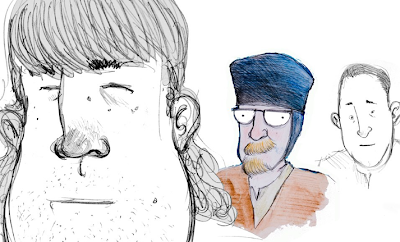 Wonderland: Okay. Silly we can work with. But… *ahem* While it’s lovely that the two females in the story are queens, is there a reason that there aren’t more girls? (Sorry. We’re Mills women. You knew this question was coming.)
Wonderland: Okay. Silly we can work with. But… *ahem* While it’s lovely that the two females in the story are queens, is there a reason that there aren’t more girls? (Sorry. We’re Mills women. You knew this question was coming.)
Hazardous Players: The absolute truth is, (sigh) we are not that good at lady voices yet. We are working very hard on improving our feminine voices. We have several characters in future episodes that would be great as women, but we are afraid we won’t do them justice. When we play back the recordings of female characters they sound like men doing lady impressions. We plan on having guest performers, some of whom will be girls, we just have to make sure they can commit to the series.
To make up the deficit of female characters in the audio story we have been adding more women to the written portion of the narrative. A recent arrival is Sara Waxpoint and her crew of monster exterminators. She seems to be an interesting character, an entrepreneur with questionable morals. She should be interesting to develop into an adversary for Professor Henchwood.
But we are conscious of the scarcity of girls and we are trying to figure out ways to rectify it.
Wonderland: Well, all right, then.
What are your future plans for Knighttime? Can you give us some story hints and information on where you’d like to take the concept in the future? What made you choose an audio format for the story, when it could have been an online comic?
Hazardous Players: Well, audio just made sense, that is how the characters were initially created. We are not professional performers, but we feel like we are improving as we record each episode. Plus trying to build a convincing audio environment is an interesting process. I would love to make a Knighttime graphic novel, but it is rather labor intensive. Again, it is the time issue; drawing one page can take quite a while. Right now we are just trying to focus on the site.
Future plans? So many ideas, so little time. Well as I mentioned before The Secret of Danotalado is written, we just need to finish recording it. We have ideas for the next chapter of Knighttime which is related to the other bits and pieces we are adding currently to the site (the Eniko posts on the blog should give some idea of what’s coming.)
We would love to start experimenting with other mediums. I’ve mentioned video, animation is something we are interested in pursuing. If we could get the nerve (shyness again) we would like to produce a live show with cast and live music. It would be great to work with musicians to produce original music that could then be compiled into a CD. News broadcasts from Udenland — ok I have to stop now or I’ll hyperventilate.
We love making this project and there are so many ideas we want to try out, it can get frustrating when you have the motivation and not the means. But for certain there will be many more adventures with Sir Cottington and Sir Bratwurst.
Wonderland: Yay! That’s really all we needed to know.
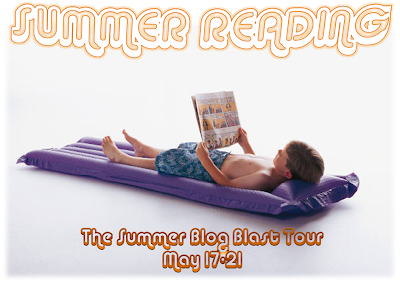 You can begin the magical mystery tour that is Knighttime right here.
You can begin the magical mystery tour that is Knighttime right here.
Meanwhile, the zephyr of awesome that is the Summer Blog Blast Tour continues with:
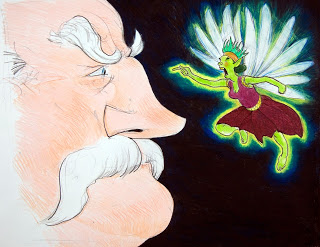
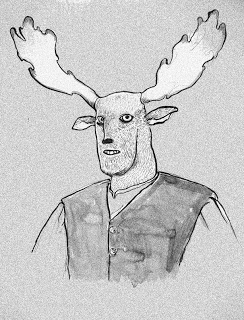
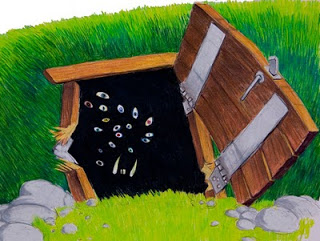
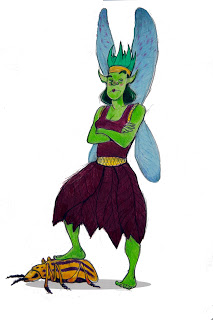
This was awesome! It's so cool to learn about alternate storytelling concepts going on out there. I'm glad you've introduced us all to these guys in the SBBT!
(and as another Tolkien fan with a son named Sam… intentional connection? Slightly related connection? Completely coincidental? My Sam is in the "quite a bit related" category, myself).
This whole post pretty much blew my mind. I knew nothing about any of this before reading it here and I'm blown away by what these guys are doing and how they are doing it. It's awesome. Thanks so much for doing this interview.
Oh my goodness! This is pretty awesome. Thanks for sharing this with us. Can't wait to show this to Spy Girl. She's going to love this.
The reference to being bad at lady voices cracked me up. The Pythons weren't that great at it either – and when I quote Python, I do my best to sound like a guy doing a falsetto lady voice. I think they ought to consider simply going for it – it would be really funny with obvious guys-doing-lady-voices!
Kel: I agree! I always though the Pythons did "lady voices" badly on purpose — making the hilarity that much higher.